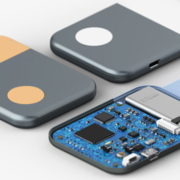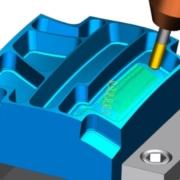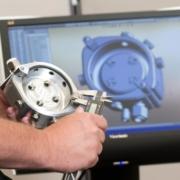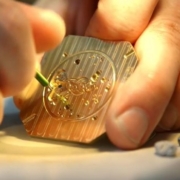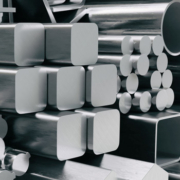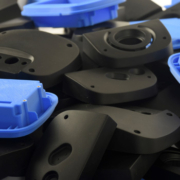Understanding the Capabilities of Rapid Prototyping Technology
Rapid prototyping is a rapid design process that includes the conception, prototyping, and testing a physical component, model, or structure utilizing a three-dimensional computer-aided design (CAD). Typically, the item, model, or assembly is constructed via additive manufacturing, 3D printing. The phrase “additive manufacturing” refers to adding materials to create three-dimensional objects.
Prototypes are used to define two distinct sorts of products.
HOW DOES RAPID PROTOTYPING WORK?
However, additional methods, including casting, molding, extrusion, and high-speed machining, are often utilized in RP. When additive manufacturing accomplishes rapid prototyping, various existing procedures may be employed to construct prototypes.
These procedures are as follows:
- Subtractive: Using grinding, turning, or milling, a section of material is cut to produce the desired shape.
- Compressive: Like casting, molding, or compressive sintering, a semi-solid or liquid material is transformed into the desired shape before hardening.
WHAT ARE THE DIFFERENT RAPID PROTOTYPING MODELS?
It was the very first successful method of 3D printing. It is a rapid and cost-effective additive manufacturing technique. It operates by the use of a tank of photosensitive liquid. By applying a computer-controlled ultraviolet (UV) light, this liquid is subsequently transformed layer by layer into a solid. It is irreversible, and we cannot convert the SLA components to a liquid state.
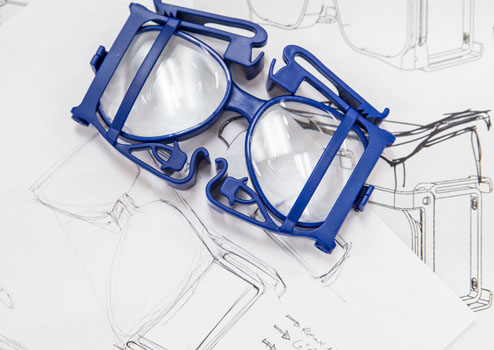
SLS components are less robust than SLA components. On the other hand, SLS is inexpensive, needs little time and work, and provides tremendous production. Additionally, the end product’s surface is rough, necessitating additional effort to produce the finished result.
FUSED DEPOSITION MODELLING (FDM) OR MATERIAL JETTING
FDM is an economical, rapid, low-cost, and simple-to-use additive manufacturing technology. It makes it an excellent platform for product creation. FDM is used in a large number of non-industrial home 3D printers. It fabricates a physical item from the ground up using melted thermoplastic filament within a printing nozzle barrel. The printer nozzle travels back and forth using computer deposition software, depositing liquid plastic layer by layer.
SELECTIVE LASER MELTING (SLM) OR POWDER BED FUSION (PBF)
SLM is often utilized by automotive, aerospace, medical, and military firms. It is a popular additive manufacturing technology among users because of its low cost and ability to produce high-strength, multifunctional products. The PBF process melts and fuses material powder layer by layer using either an electron beam or a high-powder laser to generate a prototype or a production item.
LAMINATED OBJECT MANUFACTURING (LOM) OR SHEET LAMINATION
The advantage of LOM is that no specific control conditions are required. LOM creates the CAD design by layering plastic, metal, and ceramic elements previously cut using laser beams or another cutting mechanism. One disadvantage of this additive manufacturing method is that we must describe ceramic components, which are labor demanding and result in longer processing times.
DIGITAL LIGHT PROCESSING (DLP)
The light source for DLPs is ultraviolet light from a projector, while the light source for SLAs is ultraviolet laser beams. While DLP is faster and less expensive than SLA, it often requires support structures and post-build curing.
CLIP is a process that uses digital light projection to create a component that is continually drawn from a vat without the usage of layers. As the material is withdrawn from the vat, a succession of ultraviolet images is projected onto it, causing it to change shape. It hardens the component and results in the creation of the prototype.
BINDER JETTING
This additive manufacturing approach permits the simultaneous printing of one or more pieces. In comparison to SLS, the components manufactured are less robust. This procedure involves spraying liquid binding agents via nozzles to link powder particles together, forming a single layer. The powder is added layer by layer, compressed, and distributed with a roller; then, a binder is applied. Finally, the component is built by stacking powder and a binder. When the component is complete, it is cured in an oven to remove the binding agent that bonds the powder to the completed product.
APPLICATIONS
Product designers, engineers, and development teams employ these procedures to manufacture prototype components rapidly. Prototypes are crucial to product designers because they assist in visualizing, creating, and developing the manufacturing process before mass production.
It has now been used in various sectors, including medical and aerospace. In the dentistry business, RP is used to make a variety of dental moldings, such as crowns.
Finally, rapid tooling is another use of RP that lets individuals swiftly and affordably build a product. Rapid tooling is a method in which an item such as an ultrasonic sensor wedge is manufactured and then utilized as a tool in another operation.
WHAT ARE THE ADVANTAGES?
Rapid prototyping has an infinite number of benefits. RP allows product designers, engineers, and development teams to fully understand how their product will look and function in the early stages of the design and production processes. The time required for RP varies from a few days and months and mostly depends on the additive manufacturing technology utilized.
Two further significant benefits of RP are its cost-effectiveness and accuracy. Because RP is an automated process that does not need many humans to run, it is an exceptionally economical approach to prototype items. Additionally, it is cost-efficient since RP can move quickly and resolve any issues during the production stage, minimizing the possibility of expensive mistakes. Due to its ability to be utilized in conjunction with computer-aided design, RP is a very accurate approach (CAD). It reduces material waste and eliminates the requirement for specialized equipment to prototype each unique product.
RP helps designers communicate their distinctive concepts to board members, customers, and investors in a form that they can grasp and accept. Customers may offer more accurate feedback to designers since they can visualize the final result based on the real object they can feel and touch, rather than something they must envision or visually see in a 2D drawing.
Finally, the RP method eliminates the requirement to design unique items from the start. It is an interactive technique that permits incorporating clients’ requirements into designs at a reasonable cost. This technique allows RP to offer clients additional choice and freedom.
HOW MUCH DOES IT COST?
Costs vary greatly depending on several factors. The physical size of the item, the machining method used, the quantity of the component, the necessary surface polish, the volume or amount of material used to create the part, labor costs, and the amount of post-production processing are all factors to consider.

